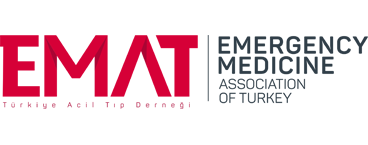The relationship between magnetic resonance imaging, clinical findings, treatment modalities, and neurological outcomes in acute traumatic spinal cord injury in the emergency department
Mustafa Ulusoy1 , Neşe Çolak2
, Neşe Çolak2 , Servan Küçük3
, Servan Küçük3 , Serap Sarı4
, Serap Sarı4 , Ali Balcı5
, Ali Balcı5
1Department of Emergency Medicine, Izmir City Hospital, Izmir, Türkiye
2Department of Emergency Medicine, Faculty of Medicine, Dokuz Eylul University, Izmir, Türkiye
3Department of Emergency Medicine, Akcakale State Hospital, Şanlıurfa, Türkiye
4Department of Radiology, School of Medicine, Katip Celebi University, Izmir, Türkiye
5Department of Radiology, Faculty of Medicine, Dokuz Eylul University, Izmir, Türkiye
Keywords: American Spinal Injury Association scoring, emergency department, magnetic resonance ımaging, traumatic spinal cord injury
Abstract
OBJECTIVES: Spinal cord injury (SCI) can lead to motor, sensory, or autonomic dysfunction and is associated with increased morbidity and mortality. This study aimed to investigate the impact of magnetic resonance imaging (MRI) and clinical findings in the Emergency Department (ED) on neurological outcomes in patients with traumatic SCI.
METHODS: This observational study included 59 patients with traumatic SCI admitted to Dokuz Eylül University Hospital’s ED between January 1 2009, and October 1, 2019. Clinical findings were assessed using the American Spinal Injury Association (ASIA) scale. Demographics, clinical findings, MRI parameters, treatment, and short term (28 ± 7 days) neurological outcomes were compared between the complete (ASIA A) and incomplete (ASIA B, C, D, and E) injury groups.
RESULTS: The incidence of SCI was 98.7 per million. The median age was 37 years (IQR: 27 52), with 86.4% of the patients being male. Common causes included diving into shallow water(30.5%) and falling from heights (25.4%). Complete injury (ASIA A) was observed in 40.7% of cases, while incomplete injury (ASIA B, C, D, and E) was found in 59.3%. The most frequently affected levels were C4 (18.6%) and C5 (23.7%). No improvement was observed in the complete injury group, whereas 44% of the incomplete injury group showed improvement (P < 0.001). Common MRI findings included cord edema (96.6%), vertebral fracture/dislocation (86.4%), and soft tissue injury (84.7%). Significant differences in MRI findings between the complete and incomplete SCI groups were observed in vertebral fracture/dislocation (P = 0.016), cord compression (P = 0.003), canal stenosis (P = 0.008), intramedullary hemorrhage (P ≤ 0.001), hemorrhage/hemorrhagic contusion (P≤0.001), anterior ligament damage (P= 0.001), posterior ligament damage (P = 0.01), maximum canal compression (MCC) (P = 0.006), and lesion length (P = 0.008).
CONCLUSION: Traumatic SCI primarily affects young males, often resulting from activities such as diving into shallow water, falls from heights, and motor vehicle accidents. Initial clinical assessments are insufficient for predicting neurological outcomes. Although MRI findings are more frequent in complete SCI, lesion length, and MCC do not reliably predict short term neurological improvement.
How to cite this article: Ulusoy M, Çolak N, Küçük S, Sarı S, Balcı A. The relationship between magnetic resonance imaging, clinical findings, treatment modalities, and neurological outcomes in acute traumatic spinal cord injury in the emergency department. Turk J Emerg Med 2025;25:107-15.
The study was started after receiving the 18.11.2019 dated and 2019/28‑28 numbered approval of Dokuz Eylül University Faculty of Medicine Non‑Invasive Ethics Committee.
The manuscript has been read and approved by all authors.
Conceptualization: MU, NC, SK, AB.
Data curation: MU, SK, SS.
Formal analysis: MU, NC, AB.
Investigation: MU, SK, NC.
Methodology: MU, NC, SK.
Project administration: MU, NC, AB.
Supervision: AB, NC.
Roles/Writing ‑ original draft: MU, NC, SK.
Writing ‑ review and editing: MU, NC, SK, SK, SS.
None Declared.
None.

